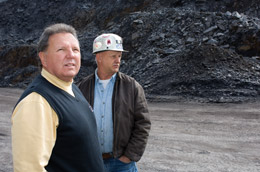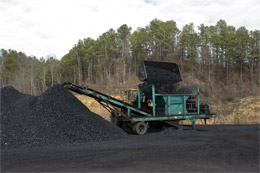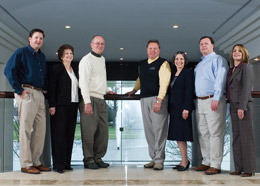|
Mining: Essential but dangerous
Challenges abound in insuring the coal industry
By Phil Zinkewicz
A little over a year ago, the world watched and listened in horror to news of the Sago Mine disaster, a coal mine explosion that took place in Sago, West Virginia. The blast and its aftermath trapped 13 miners for nearly two days. Only one miner survived. It was the worst mining disaster in the United States since a 2001 explosion in Alabama that killed 13, and the worst in West Virginia since a 1968 disaster that took 78 lives.
In addition to the tragic loss of life, the tragedy in Sago is also widely remembered for its publicity and around-the-clock news coverage. However, major misinformation was given to the public. The most significant misinformation led to the widespread announcement in the media that 12 survivors were found, followed shortly by the report that in fact only one miner had survived.
Mining can be a dangerous profession. But it is also an essential one. Just ask Jim Godfrey of the Birmingham, Alabama-based Casualty & Surety, Inc. (CSI), an MGA and wholesale broker that specializes in providing insurance coverages for the mining industry.
“Most people just don’t understand the importance of the mining industry to this country,” says Godfrey. “Mining is essential to the construction industry, to the building of new roads and bridges. Without the mining of coal, most of the country would freeze. Without the mining of gold, an essential element in the manufacturing of computers, new technology would be negatively affected.”
Godfrey is not exaggerating. Just a few of the facts regarding the mining of coal in the United States prove his point.
According to the Energy Infor-mation Administration (EIA), in 2005, there were approximately 600 power plants (1,600 plant units) and 1,100 manufacturing facilities using coal. Coal is far more plentiful than domestic oil or natural gas, accounting for some 95% of the nation’s fossil energy reserves.
The United States has nearly 268 billion tons of recoverable coal. That’s about a 240-year supply at today’s usage rates. Worldwide, coal reserves of more than a trillion tons are estimated to last 155 years.
The National Mining Association estimates that the nation will need approximately 50,000 new coal miners across the country to meet increasing demand and to replace retiring miners over the next 10 years.
Coal is the largest freight commodity moved by barges on the nation’s inland waterways. Railroads account for two-thirds of total U.S. coal shipments.
Nine of every 10 tons of coal used in the United States are for electricity generation. Of all fuel and non-fuel commodities mined, the quantity of coal currently produced ranks third behind stone and sand and gravel.
The largest coal-producing state is Wyoming, with 404 million tons of production in 2005. In the past 11 years, the United States has produced more than 1 billion tons of coal each year.
Approximately two-thirds of today’s coal production results from surface rather than underground mining.
U.S. coal exports to foreign destinations contributed $3.4 billion in 2005 to the U.S. balance of payments. Coal accounts for about 33% of U.S. energy production and 23% of consumption.
Worldwide, coal accounts for about 24% of total energy consumption, generates over 40% of the world’s electricity and employs an estimated 7 million people. Coal is by far the cheapest source of power fuel per million BTUs, averaging less than one-third the prices of petroleum and natural gas.
While coal use for domestic electri-city has more than tripled since 1970, government statistics show sulfur dioxide emissions have decreased more than 38% below 1970 levels. By 2030, SO2 emissions are expected to drop nearly in half from today’s levels!
The coal industry has reclaimed in excess of 2.0 million acres of mined lands over the past 25 years—an area larger than the state of Delaware.
Since 1978, the coal industry has paid more $6.5 billion to reclaim abandoned mine lands.
According to the Office of Surface Mining (OSM 2002), in the past 25 years, more than 24 billion tons of coal have been produced under the regulatory requirements of the Active Coal Mining Regulatory Program; more than 5 million acres have been mined to produce that coal; and most of the land has been reclaimed or is being reclaimed to the standards set by federal law.
Productivity rates have reached an astonishing average of more than 6 tons per coal miner per hour, or 48 tons in a single 8-hour day.
Godfrey’s fascination with the mining industry began in 1977. “My father was a safety engineer for a mining company,” he says. “He explained to me how the mining industry operates—what are the dangers and what are the opportunities. I decided that, somehow, I would make my future in the mining industry. So I moved into the insurance side of the business.”
With its home office in Birmingham and two other offices in Buffalo, New York, and Proctorville, Ohio (127 employees, in all), Godfrey says that CSI writes annual premiums of about $45 million and that about $30 million of that consists of mining coverages. CSI’s mining insurance program provides coverage for general liability, employers liability, pollution liability, subsidence, blasting, umbrella liability, auto, workers compensation and inland marine. The program is available in all 50 states and to all types of mining companies, including coal, aggregates and hard rock mining for both surface and underground operations, as well as the various processing facilities.
International mining companies can now be served in the mining program as well, Godfrey says. “CSI can structure a wide variety of coverage for operations in most parts of the world,” he says. “Coverage from kidnap/ransom to workers compensation can be obtained.”
Godfrey says that association programs have also been constructed for the Colorado Mining Association and the Northwest Mining Association. These programs are for general liability coverage for mining and mining-related companies and professionals.
“Basically, we break down our insureds into three different types of mining operations in the U.S.,” says Godfrey. “First, we have what we call the aggregates. They mine sand, rocks and gravel, very important to the construction industry. Second, there are the hard rock and precious metal mines, which produce gold, silver, copper and titanium. Third, there are the coal mines, where we do most of our business. In all these categories, there are both underground and surface mines. It’s amazing to realize that fully 60% of electricity capacity in the U.S. comes from coal.”
Exposures to loss vary, depending upon the type of operation, Godfrey says. “With surface mines, there are more public exposures. People can actually see the operation, hear the blasting. So claims often come from the public. With underground mines, there are the dangers of fire and collapse, so workers comp claims are more frequent. The toughest line of business for which to obtain quotes is business interruption, especially in underground mines.”
Godfrey says that the mining industry has taken steps to mitigate losses. “Most large companies have a risk management and loss control expert on staff,” he says. “The industry has become heavily safety conscious.”
As for insurance market conditions, Godfrey says that pricing and coverage restrictions are dictated by the line of business. “The auto area is fairly easy to place, other than when a vehicle is hauling sand and gravel. There are only two or three carriers that will write umbrella coverage for underground mines. Only one or two insurers will write business interruption in underground mines. Inland marine is fairly easy. As for workers comp, other than state pools, there are only two or three carriers interested in writing the line. Overall, the insurance market is not very competitive.”
One of the mining industry’s problems, according to Godfrey, is attracting new talent into the business. “The industry has gone through a period of consolidation,” he says. “Whether the industry can attract new and talented employees is anybody’s guess. But for an industry as essential to the economy as mining, it is certain that mining companies will work doubly hard to do so.” * |
|
Click on image for enlargement |
 |
| |
James H. Godfrey, Jr., CIC, President of Casualty & Surety, Inc., left, meets with Clayton Kizzire, Mine Superintendent, Reed Mining, Inc., Jasper, Alabama. |
| |
 |
| |
“Mining is essential to the construction industry, to the building of new roads and bridges.… Without the mining of gold, an essential element in the manufacturing of computers, new technology would be negatively affected.”
— Jim Godfrey
Casualty & Surety, Inc.
Birmingham, Alabama |
| |
 |
| |
The Casualty & Surety, Inc., team includes (from left): Rob D. Roberts, CPCU, Executive Vice President; Millie Kelly, Mining Specialist/Manager; O. Lamar Andrews III, Executive Vice President; Jim Godfrey; Deborah Sorrell, Mining & Products CSR; Gregory A. Roberson, Chief Financial Officer; and Laurie Fontenot, Mining CSR. |
|


